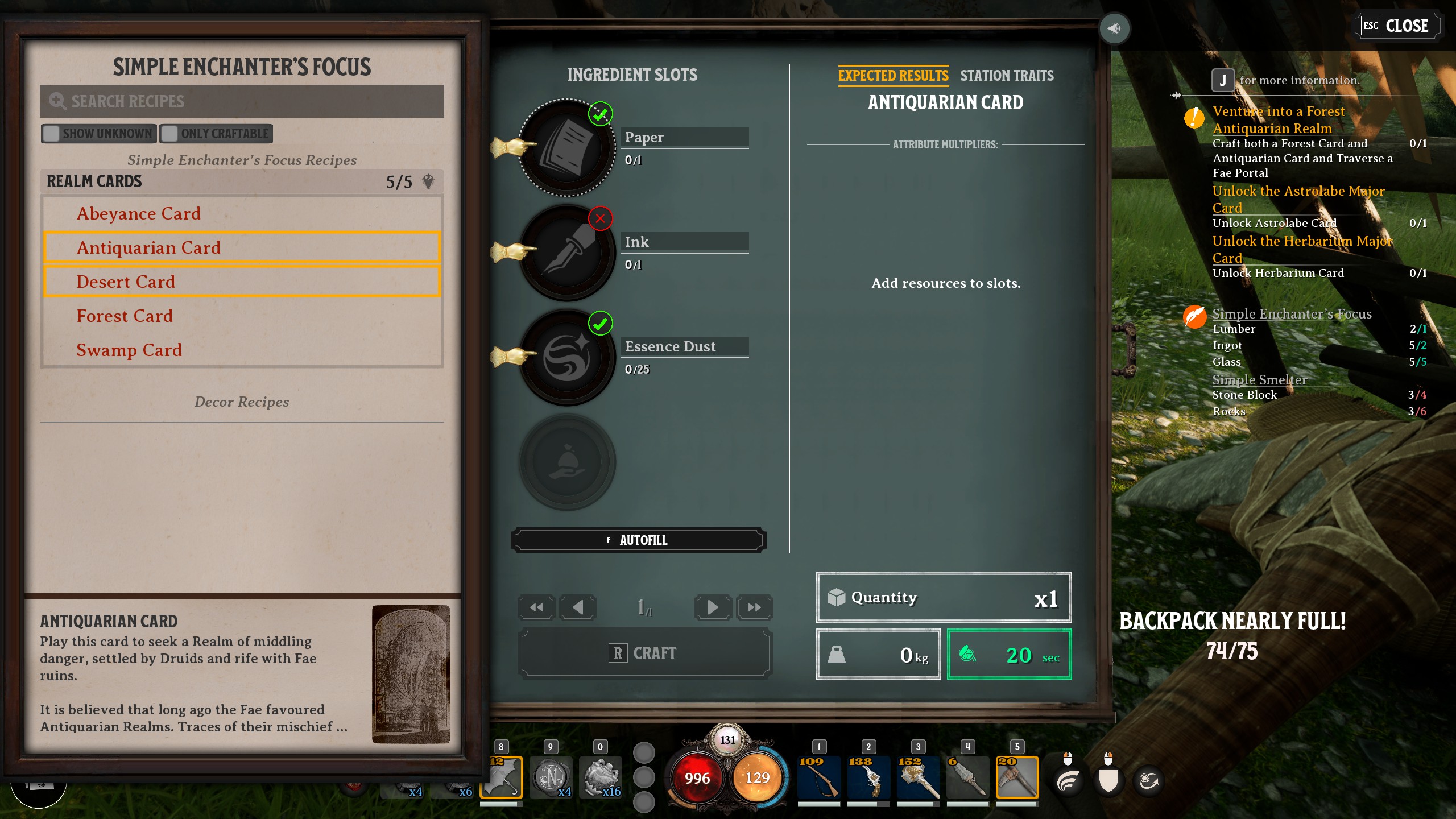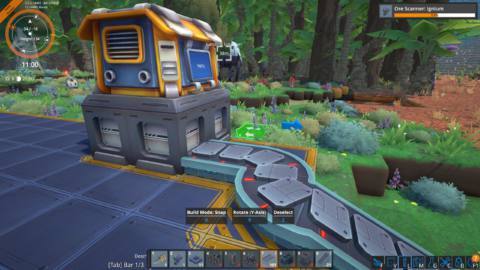Realm Cards are required to open a portal to a new realm in Nightingale. Not only do they allow you to choose which biome you'll wind up in, but they also give you some control over what you can expect when you get there. You'll have your own home realm to return to, so while much of your time might be spent realm-walking, you will have a relatively safe place to put your feet up if you need a break.
You need two cards to open a portal: the Biome card is self-explanatory and determines whether the resulting realm will be a forest, desert or swamp, while the Major card dictates which parameters it should abide by, including points of interest, NPCs and quests. You can also play another type of card by locating the Realmic Transmutor once you're inside the realm, but for the purposes of this guide, I'll concentrate on the Realm Cards required to open a portal.
Nightingale Realm cards: Where to use them
Once you have a Biome card and a Major card and you're ready to make a portal, you'll need to place them in a console at a Portal structure, which you can find in all realms. These should be marked on the map once you enter a realm but these structures are pretty large archways, so they should be easy to spot once you get near.
Realms are procedurally generated but once you create a realm with two specific cards, those two cards will always bring up the same realm with your current progress unless you tell the Portal console to create a new one. Just be aware that doing this will wipe clean anything you've done in that realm, including buildings and points of interest, and procedurally generate another one with the same parameters.
You'll gain access to some Realm Cards automatically as you play, while you'll need to unlock the recipe for others by completing their corresponding Site of Power before you can craft them.
Before you actually open the portal though, make sure you're prepared to defend yourself. You'll often get attacked by Bound, and you'll need to fend them off long enough for the portal to fully open so you can jump through.
Nightingale Biome cards

Three Biome cards are currently available, though more will be added in a future update. Each biome is unique in its landscape, wildlife, and resources, so you'll be able to target specific realms depending on your needs.
Here are the three Biome cards:
- Forest
- Desert
- Swamp
The Forest card creates a realm that is probably the most recognisable to survival veterans. You can hunt deer and boars, chop down trees and swim in lakes and streams. It's the most friendly of the three biomes, and is likely to be where most choose to make their home and build their base.
Both the Desert card and the Swamp card are where things start to get a bit strange, and you're reminded that you're traversing alien realms. The creatures become stranger, and the environments a lot more hostile. In the desert biome, you need to stick to the shade or keep your umbrella up at all times, otherwise, you'll overheat. The swamp, while cooler, will drain your health if you spend too much time in the diseased water.
Major Realm Cards

As mentioned above, Major cards determine further parameters for the realm you create. This includes points of interest, NPCs and quests, as well as the difficulty. Some of these you'll gain access to automatically as you play, while you'll need to unlock the recipe for others by completing their corresponding Site of Power before you can craft them.
It's unclear how many Major cards exist in Nightingale but I'll be sure to update this guide as I discover more and their uses become clear.
Here are the Major cards that I've found so far:
- Abeyance
- Antiquarian
- Astrolabe
- Hunt
- Byway
- Herbarium
The Abeyance card is ideal for your base and learning the ropes of the game. While there are hostile creatures here, they are far more forgiving than those found on other realm types. You'll also have the introductory quests here which help guide you through the first part of the game and get you acquainted with some of the crafting stations.
Antiquarian and Astrolabe cards increase the difficulty from what you're used to on your Abeyance realm and will introduce you to new factions: the Druids and the Calcularia, respectively. The Hunt card, on the other hand, spawns an Apex creature in the realm you create, so you should go prepared if you plan on challenging it. Once inside the realm, you can track the creature's whereabouts by following the glowing trail.
You use the Byway card during the tutorial and it's unclear if it will have any further use, and I discovered the Herbarium card by stumbling upon its Site of Power, though I haven't had the chance to create a realm with it yet, so I'm unsure of the effects it will have when used.






